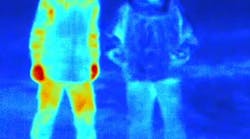Manufacturers built more than 1.3 billion radio-frequency-identification (RFID) tags in 2005, and by 2010, that figure will soar to 33 billion, reports market researcher In-Stat in Scottsdale, Ariz.
“By far the biggest RFID segment in coming years will be supply-chain management,” says Allen Nogee, In-Stat analyst. “This segment will account for the largest number of tags/labels from 2005 through 2010. Wal-Mart, the world’s largest retailer, has spurred this projected growth by mandating that its top 100 (and, later its top 300) suppliers begin to use RFID.”
The U.S. Department of Defense (DOD) also is expected to help drive RFID production over the next four years. The second year of a three-year rollout of RFID requires contractors supplying materiel to the DOD to affix passive RFID tags, at the case and palletized unit load levels, to shipments of packaged petroleum, lubricants, oils, preservatives, chemicals, additives, construction and barrier materials, and medical materials to the Defense Distribution Depots in Albany, Ga.; Anniston, Ala.; Barstow, Calif.; Cherry Point, N.C.; Columbus, Ohio; Corpus Christi, Texas; Hill, Utah; Jacksonville, Fla.; Oklahoma City, Okla.; Norfolk, Va.; Puget Sound, Wash.; Red River, Texas; Richmond, Va.; San Diego, Calif.; Tobyhanna, Pa.; Warner Robins, Ga.; or the Air Mobility Command Terminals at Charleston Air Force Base, Charleston, S.C.; Naval Air Station, Norfolk, Va.; and Travis Air Force Base, Fairfield, Calif.
The spread and use of RFID in most sectors will largely be determined by cost, and the cost is dropping quickly. Pharmaceutical companies, furthermore, are investigating using RFID tags to reduce counterfeiting and black market sales.
The report, “RFID Tags And Chips: Opportunities in the Second Generation” (IN0502115WT), contains estimates and five-year forecasts for the number of tags produced and revenue earned from tag sales, broken down into the following segments: livestock, domestic pets, humans, cartons/supply chain uses, pharmaceuticals, large freight containers, package tracking, consumer products, security/banking/purchasing/access control, and others.
In addition, there are estimates and forecasts for tag/label ASP for each segment. For more information contact In-Stat online at http://email.in-stat.com/cgi-bin4/DM/y/etc70HWFGD0K560D88C0EI.


